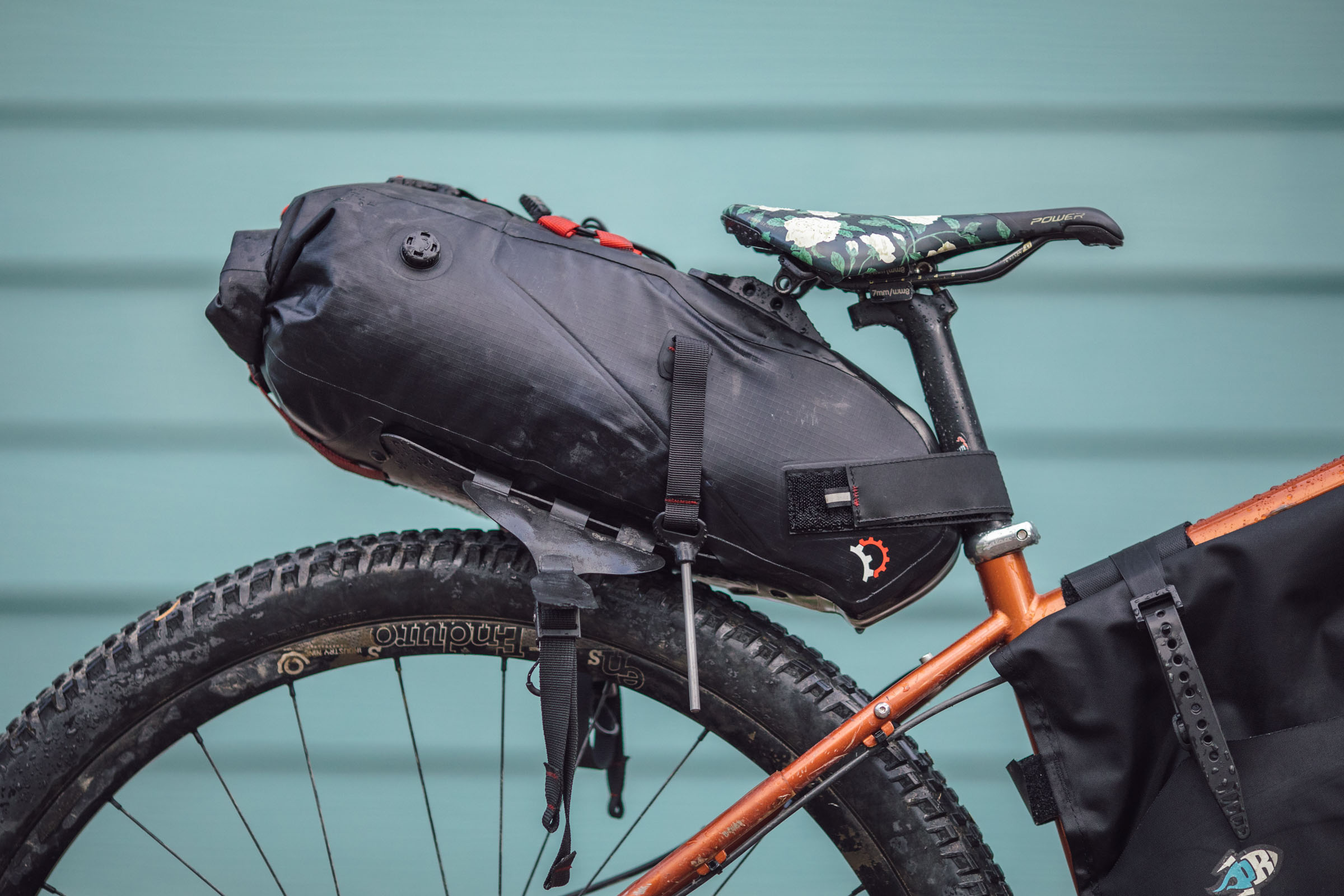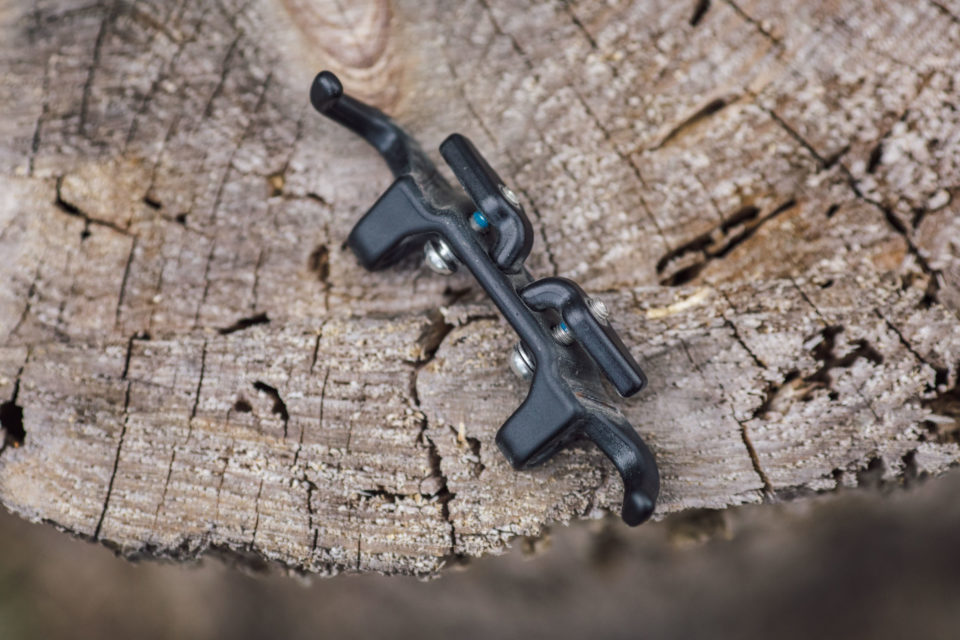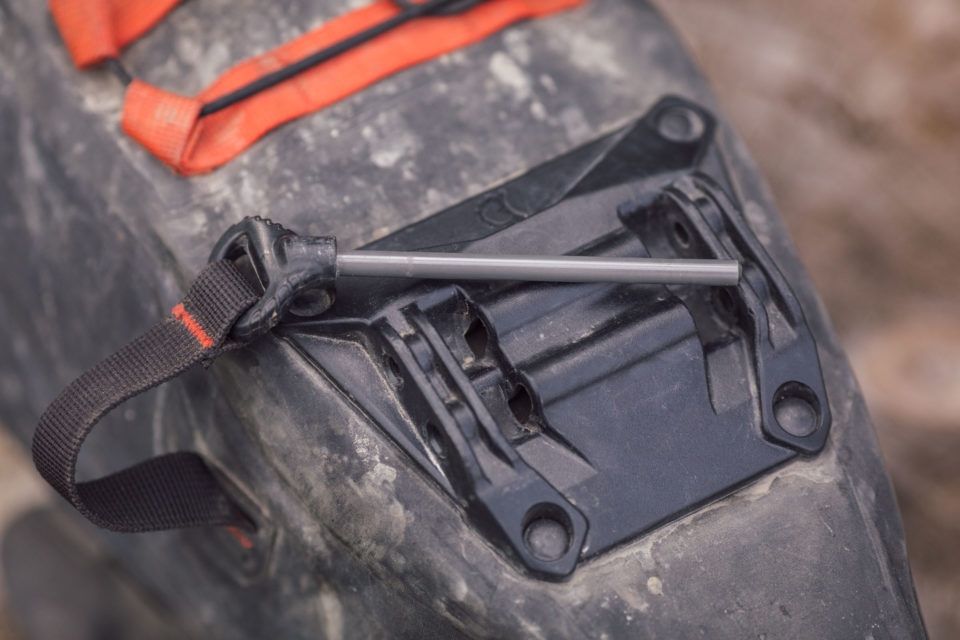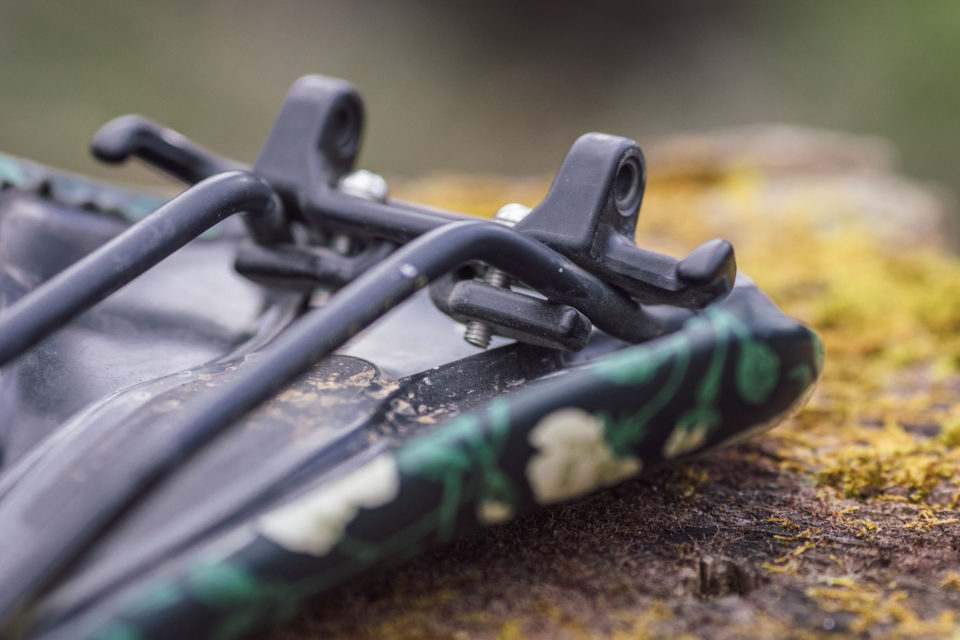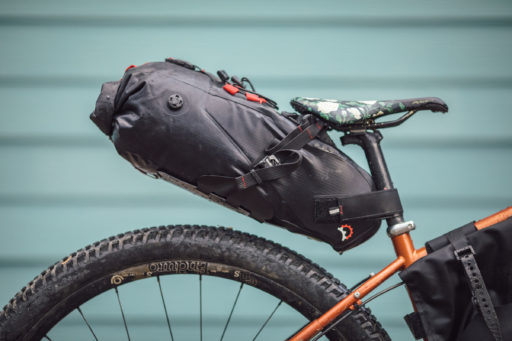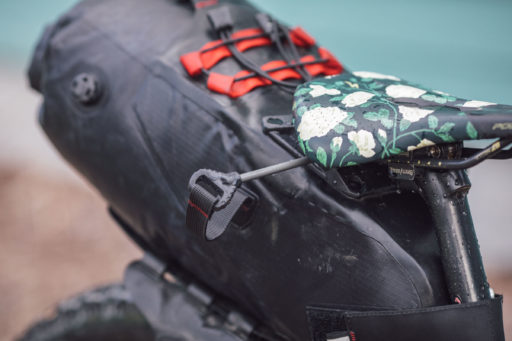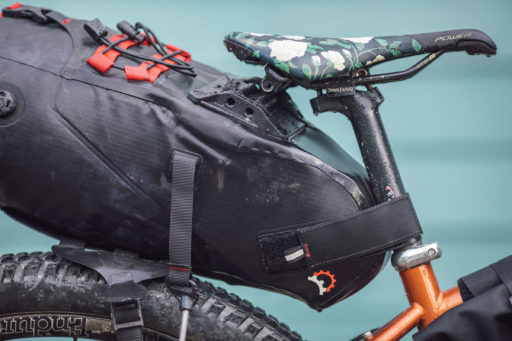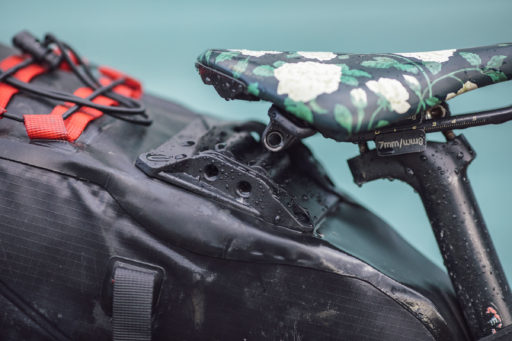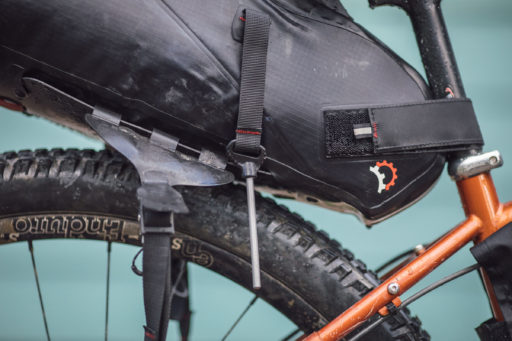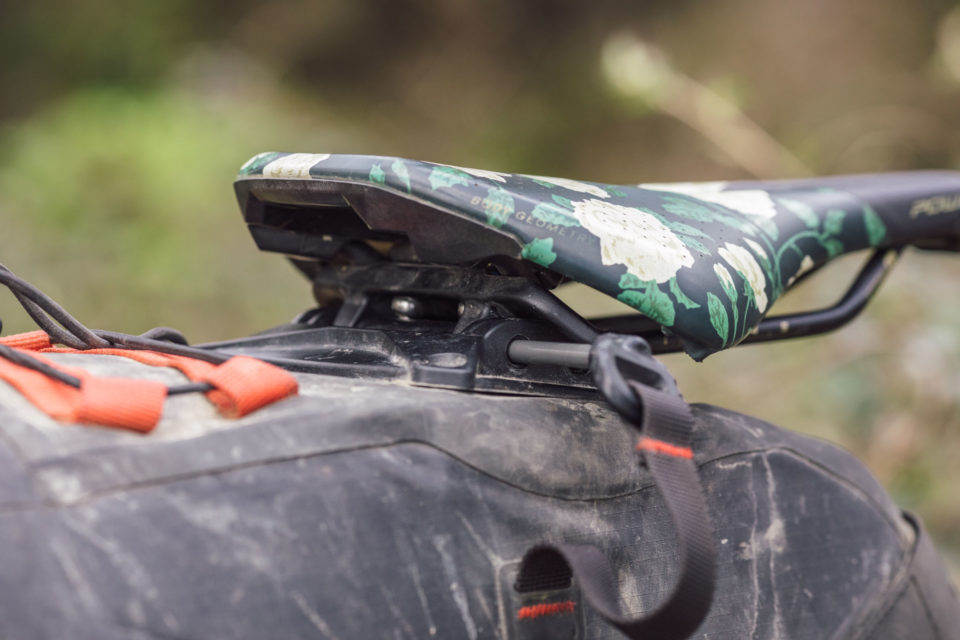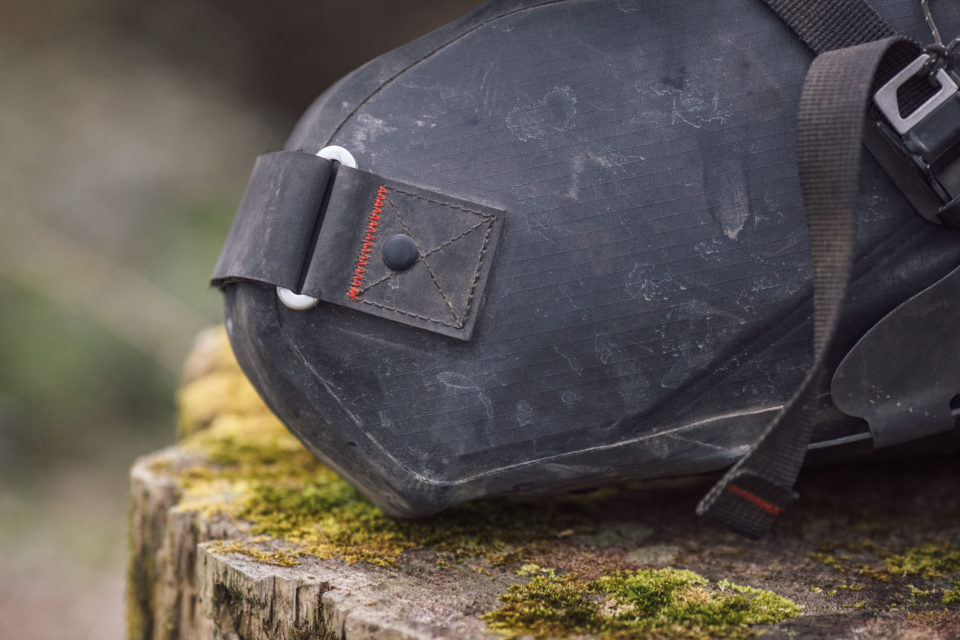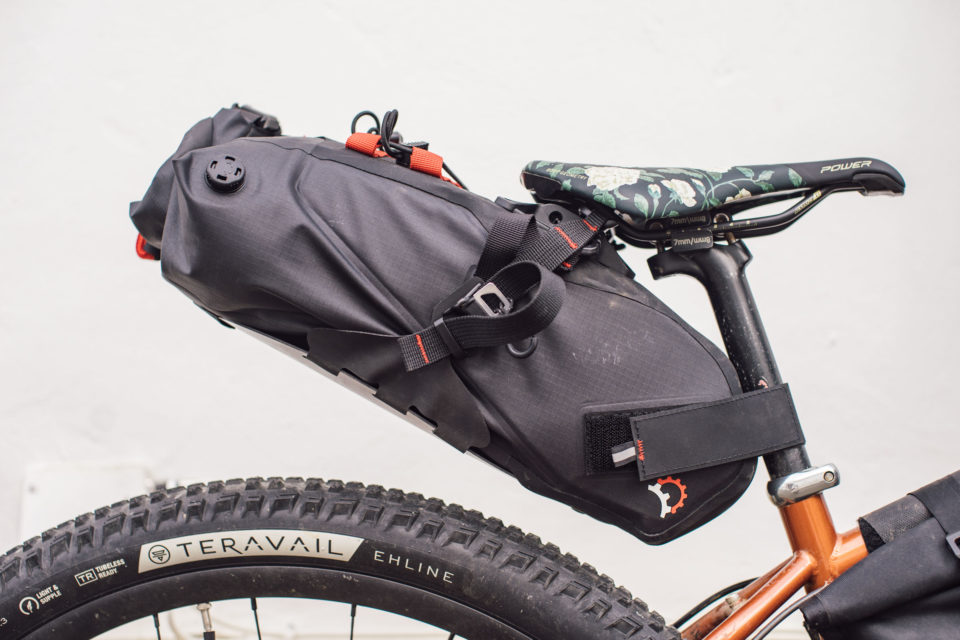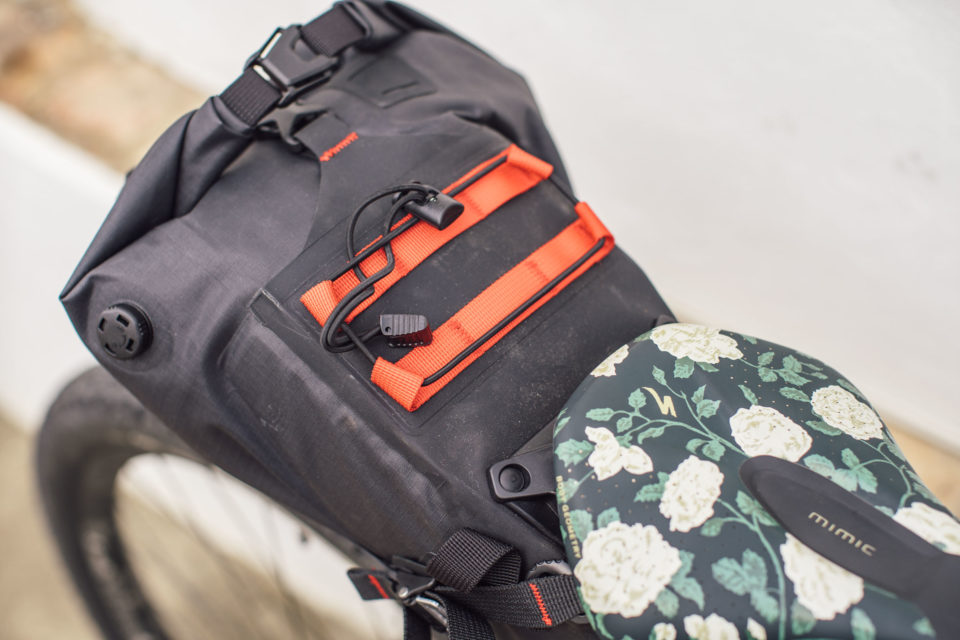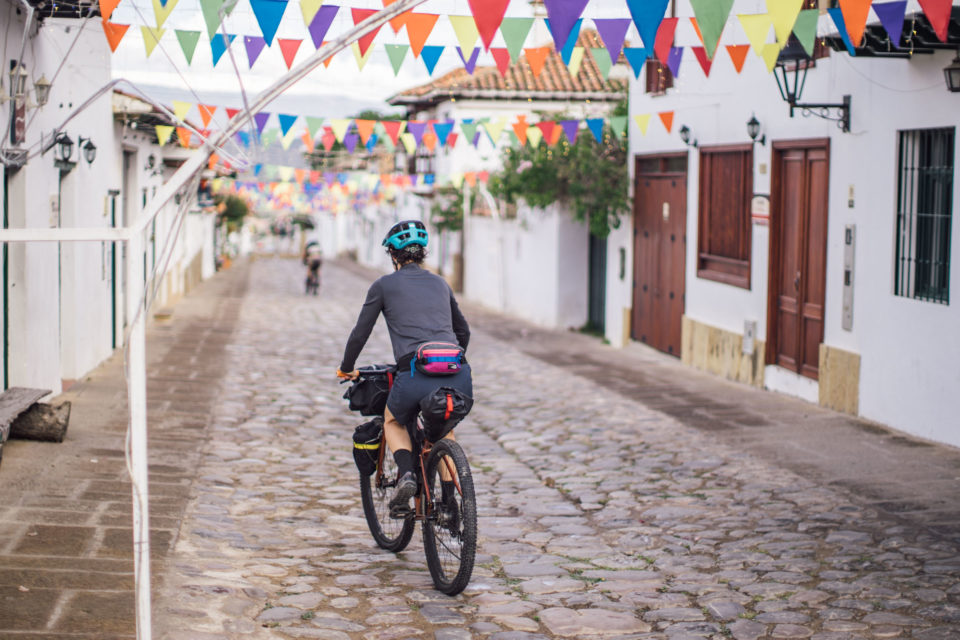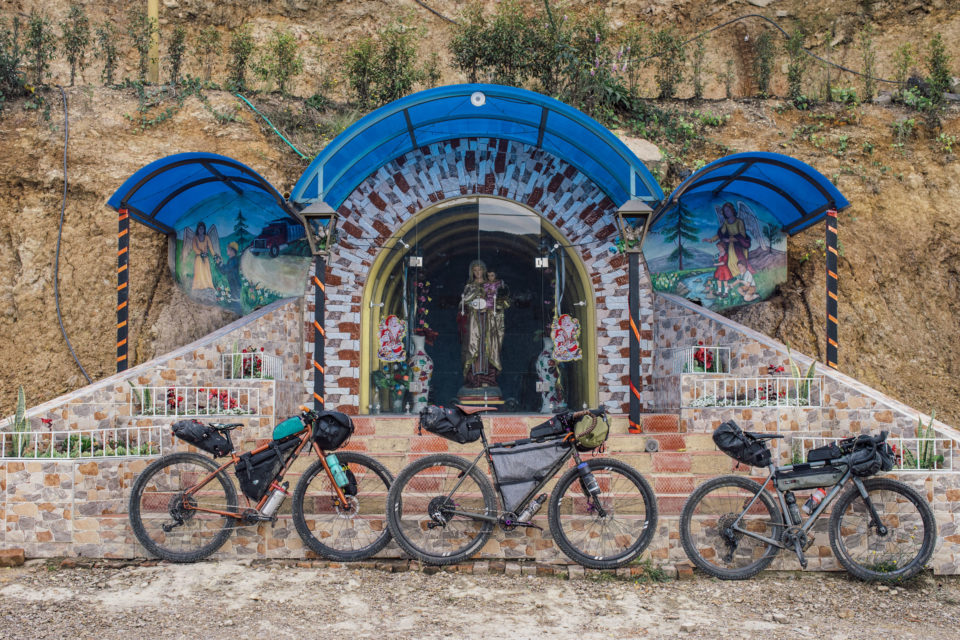Revelate Spinelock Seat Bag Review
Share This
Revelate Designs just released the new Spinelock System, creating two incredibly stable, waterproof seat bags with a quick-release pin mounting plate that attaches to an innovative saddle rail clamp. We had the chance to put one through some rigorous testing over a month on Colombia’s ultra-bumpy dirt roads. Here’s the full review…
Seat bags have probably undergone more evolution than any other bikepacking bags in recent years. They’ve certainly come a long way since we first started featuring them on the site. Perhaps the most pivotal milestone was in 2013 when Revelate Designs launched the Terrapin, the first waterproof saddle bag to use a modular holster system for quickly detachable, off-bike packing and unpacking. Around the same time, Porcelain Rocket released Mr. Fusion, the first seat pack to feature a hardware-mounted stabilizer system, resulting in a super solid solution that didn’t sway back and forth while pedaling. After that, there were a couple of other small bag makers with minor innovations, but it was quickly “game on” as other companies borrowed these two underpinning ideas to make their own version of a bikepacking seat pack.
By now, you’d think everything has been done as far as saddle-mounted, bikepacking-style seat bags are concerned. And it’s actually been a while since I’ve seen something completely new, but today Anchorage-based Revelate Designs did it again with a completely unique seat bag system. From the outside, the Revelate Spinelock System seat bag looks a lot like any other bikepacking-style saddle pack, but its patented mounting system is different from anything else on the market. We’ve been testing one for several months prior to this review.
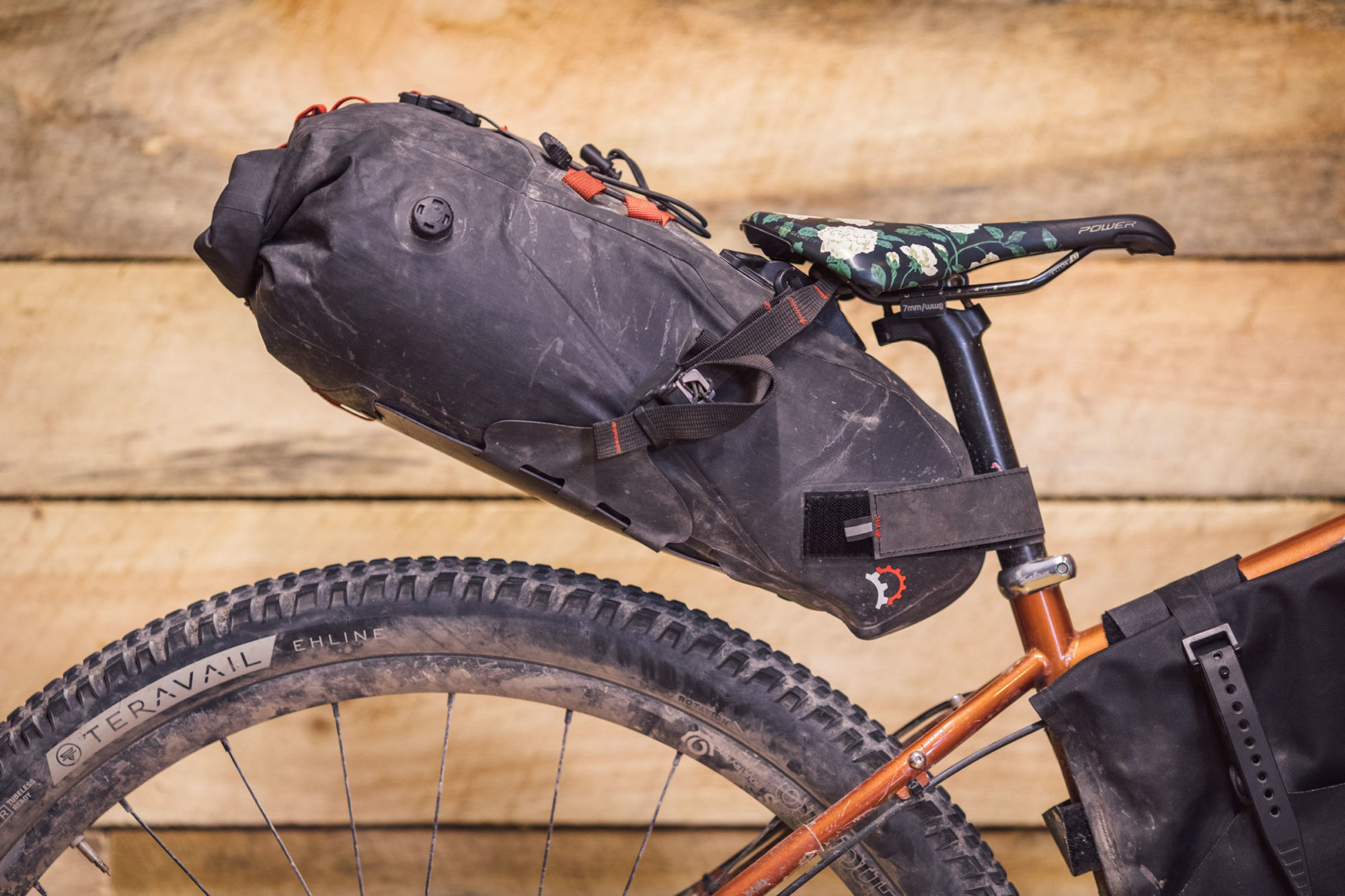

The Spinelock system has pretty much all of the features one could wish for… all rolled into one seat pack. In fact, I really can’t think of anything it’s missing. It offers a clever quick-release mechanism for getting the bag on and off for packing/unpacking, it’s 100% waterproof, and according to Revelate, it’s designed to be “the most stable seat bag with the lowest profile mounting hardware on the market.” Furthermore, the Spinelock bags feature a one-way air purge valve, rear light mounting slots, a shock cord deck on the top to stash extra gear, and a skid plate on the bottom for durability. And it comes in two sizes to fit a wide range of bikes and riders. What more do you need out of a seat pack? Let’s dig in to see if all this adds up.
The Revelate Spinelock system has been in development for over three years. I first saw a prototype about 15 months ago when Joe Cruz brought one along on our Ethiopia excursion for testing and feedback. Although that prototype was close to final, it took a while to bring the production Spinelock bags to market. Revelate went through an intricate patent application and there was a long lead time for forging the mounting hardware, in addition to several rounds of refinements on the Spinelock mounting plate—according to Revelate, the tolerances between the pin and plate system had to be perfect.
The mounting plate itself is molded out of UV-stabilized, impact resistant nylon resin. The plate is riveted to the top of the bag and has two different channels for the mounting pin to pass through. This allows the bag to have two different fore and aft positions to adjust placement depending on the saddle and seatpost position. The system’s name is actually derived in part from the look of these two channels, which vaguely resemble the two pieces of coping on the crest of a skateboarding spine ramp.
The other major component in the mounting system is the relatively small, forged aluminum clamp that secures to the saddle rails and provides two U-shaped channels that fit into the mounting plate. Each U is fitted with an igus bushing to form a pin interface and create the perfect tolerance I mentioned above. The aluminum clamp has two L-shaped clamps that bolt down and brace directly to each saddle rail. This was a little fiddly at first, but works really well and we didn’t have any issues with it loosening during our 600-mile trip in Colombia, which I might add consisted of some of the bumpiest dirt road descents I’ve ever experienced.
To connect the Spinelock, you simply line up one of the two channels on the bag’s base plate with the U-mounts of the saddle rail clamp and insert the steel pin that’s tethered to the bag. The advantage of the pin system is that it allows the bag to quickly release from your bike—as illustrated in the slideshow directly below (and Revelate’s video under the Wrap Up below). The bag also has two side compression straps, each with a looped end that fits around a horn-shaped protrusion on either side of the saddle rail clamp. When cinched down, these two straps provide greater load transfer and compress the contents of the bag to keep it secure. In addition, the left side strap overlaps the angled handle of the quick-release pin and keeps it in place. It’s a very elegant multipart mechanism that all ties together quite nicely. Generally speaking, once you get used to the system, releasing and attaching the bag to the clamp mount is pretty easy too. It may not be as zippy as a system like the Terrapin or the Mr. Fusion, where it’s simply a matter of unclipping a strap and sliding a dry bag out, but it’s pretty quick and very secure.
Once the pin is in place and the straps are battened down, the Spinelock bag is incredibly stable, with hardly any side-to-side movement while pedaling along. It’s perhaps not quite as stable as Mr. Fusion’s mini-rack, but it’s kind of splitting hairs to compare the two for the sake of stability. Moreover, this level of stability and rigidity is a lot less sensitive to how and where you pack items into it. Unlike soft seat bags—like the original Terrapin or Viscacha—you don’t need to carefully pack heavier items near the seat post to prevent the bag from sagging. Similar to the Mr. Fusion, you can just toss things in and not worry about having clothes tightly rolled or heavy things only in the front.
Speaking of packing, the rear of the bag features a roll-top design with a single compression strap to keep it tightly closed. The opening is plenty wide, even on the 10L model, and the air purge valve allows you to compress unwanted air out after it’s packed. The bag itself is constructed from impermeable polyurethane-coated 210 Denier Ripstop Nylon—the same fully waterproof, welded material used in several other bags in Revelate’s product line. However, the bag has a unique chassis to help it keep its shape. There are essentially four panels of HDPE plastic that make up the Spinelock’s structure: two small welded-in side panels, a thicker, tapered “spine” that’s on the top interior of the bag, and an external plastic bottom skid plate with a new patented attachment system consisting of three rivets and several hypalon reinforcements.
As mentioned, there are two size options in the all-new Revelate Designs Spinelock system lineup: a smaller 10L pack and a large 16L version, the biggest seat pack released by Revelate in their 10+ years as a company. We found the 10L bag to be a great size for our packing style, but the 16L might be preferred by riders who like to pack extra, or those setting out on longer trips or cold weather adventures. Both Spinelock systems come with two main components: the bag itself and a forged alloy mount that clamps to the saddle rails. All the photos here are of the Spinelock 10L system that we tested on our recent trip in Colombia.
- Models available 10L ($179) or 16L ($185)
- Saddle rail to tire clearance 10L (8.0″/20.3cm); 16L (9.5″/24.1cm)
- Model tested 10L
- Weight of bag (as tested) 573g (1.26 pounds)
- Weight of clamp 57g (2.01oz)
- Place of manufacture China
- Manufacturer’s Details 10L / 16L
Pros
- One of the most stable seat packs on the market, only rivaled by Porcelain Rocket’s Mr. Fusion.
- Innovative saddle rail clamp is lightweight and minimal, so keeping it on the bike when not in use has negligible effects on weight, performance, or aesthetics. And, a hidden perk is never having to thread straps through the saddle rails… something that’s always a little cumbersome.
- Completely waterproof and fairly easy to remove for off-bike packing and unpacking.
- Stable, hardshell design makes it less susceptible to sag from sloppy packing than the Terrapin.
- Two different sizes accommodate a wide range of rider heights and bike sizes.
Cons
- A little heavier and more expensive compared to some other seat packs.
- Not quite as easy to remove as a drybag system, such as the Terrapin.
- Made in China might be a deterrent to some (when comparing to other seat packs made in your country of residence). This could also mean it could be hard to come by in the not-too-distant future.
- The seat post strap connects a little too low to use with a dropper post. Fingers crossed that Revelate releases a dropper version.
Wrap Up
All in all, the Spinelock bag is an extremely well thought out product, and we’re stoked to see Revelate Designs pushing the seat bag envelope yet again. It ticks all the feature boxes, it’s waterproof, and it’s extremely stable. But it’s also pretty complex. I mean that in a good way, but that fact also comes with some minor consequences. For one, it’s a little heavier than comparable volume seat packs—about 191 grams over the Terrapin 8L and 305g more than the Ortlieb Seat-Pack 11L. And it’s also slightly more expensive than both of those. Even so, both of those cons are justified, in my opinion. The mounting system is brilliant and seems very well made; we had no problems after putting a lot of rough miles on it (there were actually two of them that came along for our Colombia trip; one of which had even more miles on it prior, and neither had any issues). As far as the Spinelock’s price tag, yes, it costs more (or as much) as many handmade seat packs, but you get a lot for the money. And considering the amount of blatant piracy in this niche industry—and that accusation is not limited to bags, but that’s a bigger rant for a different day—I don’t blame Revelate for spending a lot of additional money up front to get a patent for the mounting system, nor do I fault them for investing the extra time to get it right.
Please keep the conversation civil, constructive, and inclusive, or your comment will be removed.






